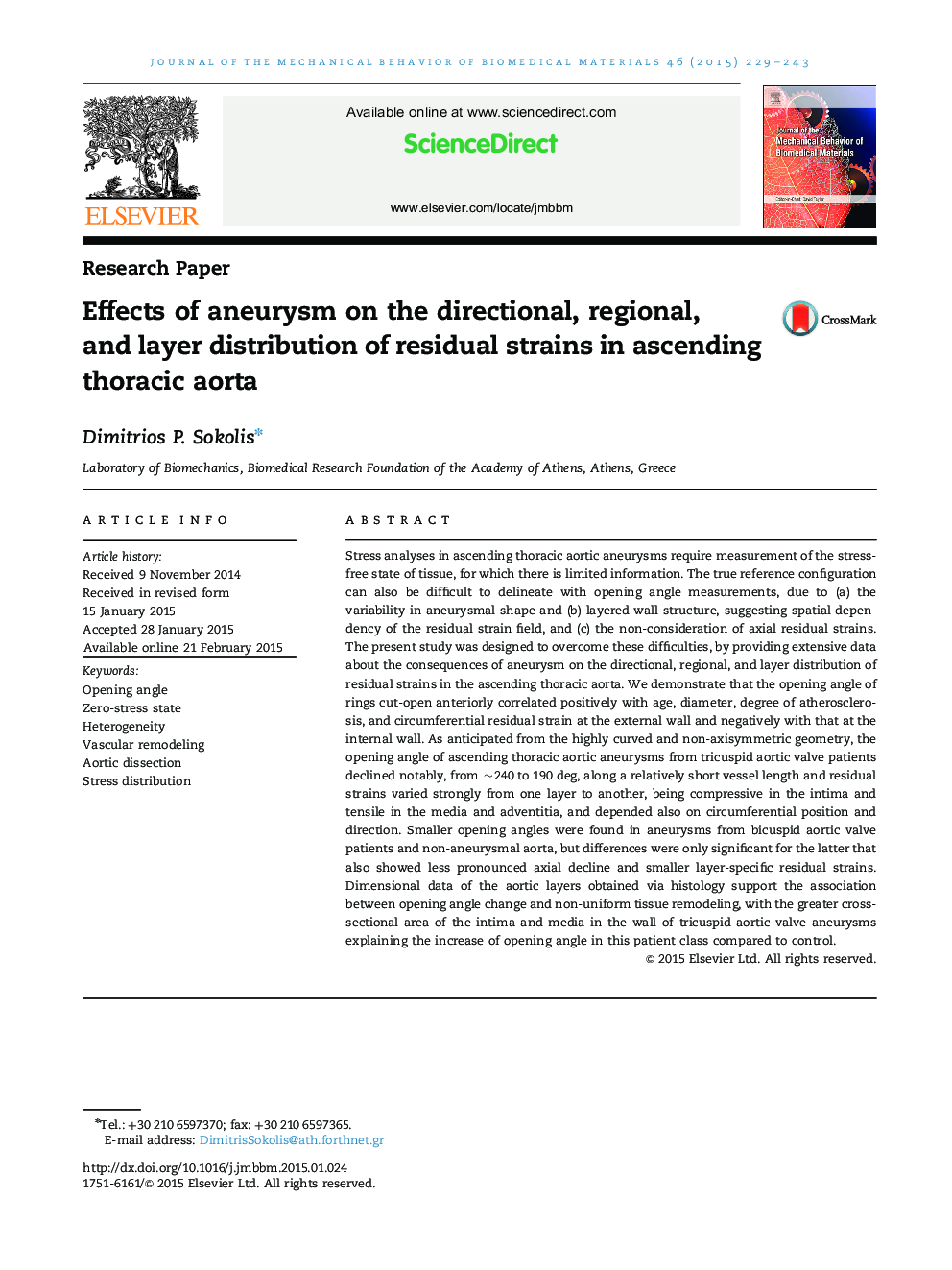| کد مقاله | کد نشریه | سال انتشار | مقاله انگلیسی | نسخه تمام متن |
|---|---|---|---|---|
| 810634 | 1469099 | 2015 | 15 صفحه PDF | دانلود رایگان |
• Increase of opening angle with age, diameter, and residual strain difference.
• Decrease of opening angle along the ascending aorta.
• Layer-specific residual strains depending on circumferential position.
• Smaller opening angle, axial decline, and residual strains in non-aneurysmal aorta.
• Association between opening angle change and non-uniform tissue remodeling.
Stress analyses in ascending thoracic aortic aneurysms require measurement of the stress-free state of tissue, for which there is limited information. The true reference configuration can also be difficult to delineate with opening angle measurements, due to (a) the variability in aneurysmal shape and (b) layered wall structure, suggesting spatial dependency of the residual strain field, and (c) the non-consideration of axial residual strains. The present study was designed to overcome these difficulties, by providing extensive data about the consequences of aneurysm on the directional, regional, and layer distribution of residual strains in the ascending thoracic aorta. We demonstrate that the opening angle of rings cut-open anteriorly correlated positively with age, diameter, degree of atherosclerosis, and circumferential residual strain at the external wall and negatively with that at the internal wall. As anticipated from the highly curved and non-axisymmetric geometry, the opening angle of ascending thoracic aortic aneurysms from tricuspid aortic valve patients declined notably, from ~240 to 190 deg, along a relatively short vessel length and residual strains varied strongly from one layer to another, being compressive in the intima and tensile in the media and adventitia, and depended also on circumferential position and direction. Smaller opening angles were found in aneurysms from bicuspid aortic valve patients and non-aneurysmal aorta, but differences were only significant for the latter that also showed less pronounced axial decline and smaller layer-specific residual strains. Dimensional data of the aortic layers obtained via histology support the association between opening angle change and non-uniform tissue remodeling, with the greater cross-sectional area of the intima and media in the wall of tricuspid aortic valve aneurysms explaining the increase of opening angle in this patient class compared to control.
Figure optionsDownload high-quality image (201 K)Download as PowerPoint slide
Journal: Journal of the Mechanical Behavior of Biomedical Materials - Volume 46, June 2015, Pages 229–243
